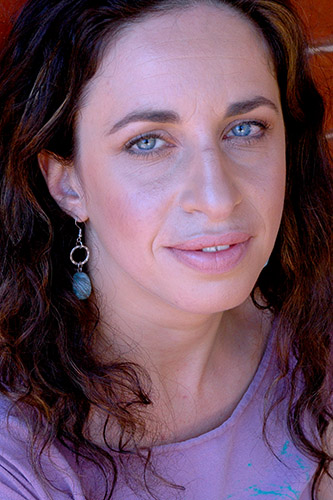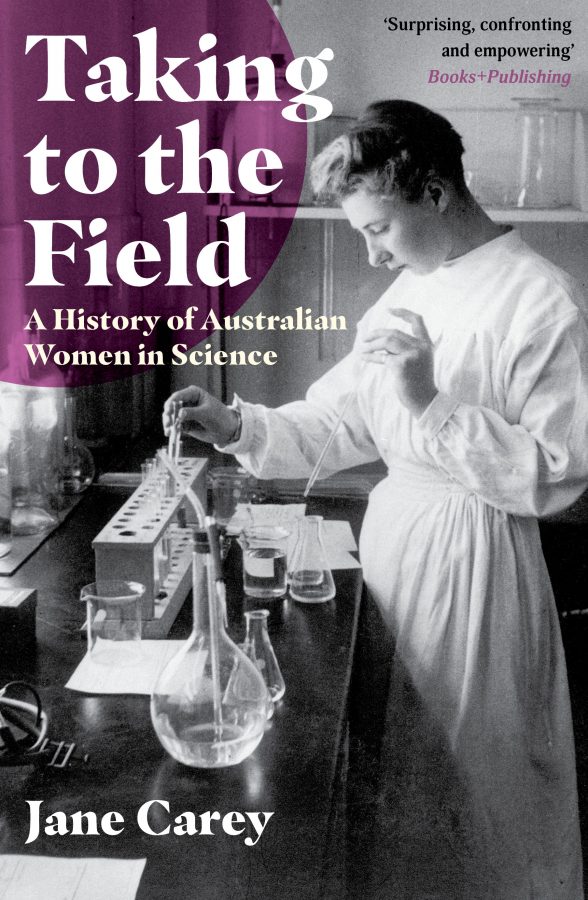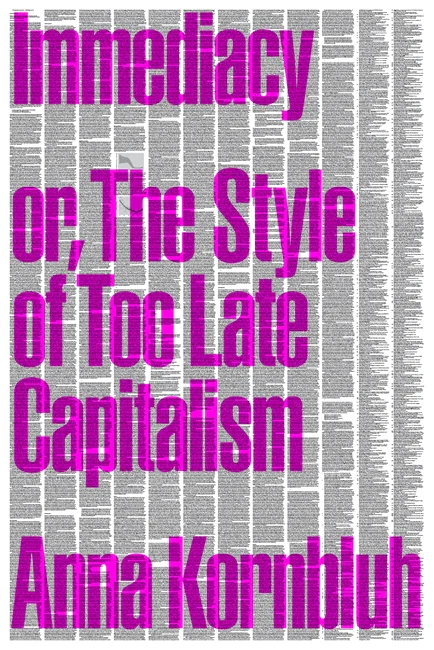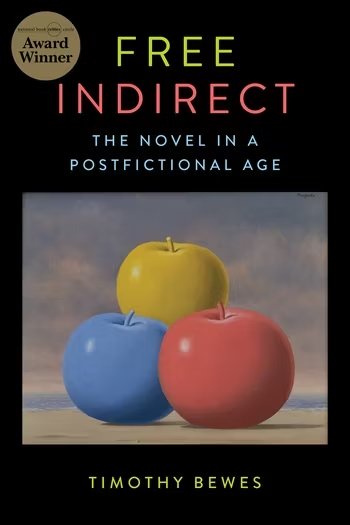Can you actually do this?
‘Reviewing,’ proposes Michael Hofmann in an introduction to a book he wrote fifteen years back, ‘seems to me to be (perhaps wrongly) as unrepeatable, as “hot” and as improvisational an activity, as writing poems.’
Two Hofmann reviews that appeared in the London Review of Books in 2014 – one extraordinary and brutal, on Martin Amis, the other extraordinary in places and brutal to excess, on Richard Flanagan, our Flanagan – excited me more than anything I’d read in a long time. I don’t get off on hatchet jobs. And I don’t think this is what Hofmann’s reviews are, although plenty of smart people see them that way. I did not know when reading Hofmann’s review of Amis’s The Zone of Interest who Hofmann was. Once I finished reading I ran to Google him. Things were shaking – my body parts. When do they ever shake? Maybe they did when I was reading the first review of my first book, but not since then.
I asked myself why, what was happening, and at least some of the answer was obvious: stylistically Hofmann blew my head off, as in while reading I kept thinking, can you actually do this?; whole paragraphs, masterful, convention-eviscerating, were unlike anything I’d seen; the intellectual power was, no better word for it, scary. Exhilaration! And – danger. Plus: steam was coming off the page. The esteemed critic didn’t use an indoor voice. Also I am convinced the whole thing, though it may have felt pointed and cruel to the authors under review and to readers who loved their books and to the judges who gave those books prizes of note, was utterly impersonal. Ecological – Hofmann’s word: ‘I have a sense,’ he said in a Guardian interview, ‘of the enterprise being ecological. There is so much excessive praise and excessive interest in the books world, and it’s all too focused on too few people. If you cut things down to scale, you do something good.’ He was talking about the need to respond to literary works that he sees as false prophets of our times. About responding not as a critic, people’s everyday sense of a critic at least, but as a poet – with language that is vigorous, unfilleted, highs-inducing, unamenable to compromise.
Or, rather, it was completely impersonal and personal. I was a bit frightened for Amis. For Amis! Have you seen him? I was frightened for myself too. What if I never write again, nothing, not reviews, not my own stuff, not after this Hofmann guy is done with Amis, with Amis and me? Yes, I felt personally reproached for the bad writing I do. Reproached and caught out. Maybe it’s too Freudian on my part, too ‘Daddy with a big stick’. Maybe I should see someone about it. It was the same when I read Hofmann on Flanagan, whatever that review’s missteps, the slagging, the bits in poor taste, and the times when Hofmann, unforgivably, couldn’t be bothered explaining why this book, in his mind, was so bad. Reading Hofmann’s description of Flanagan’s prose – ‘ingratiating’, ‘gassy’, ‘bullying’ – I thought: these words will haunt me whenever I get back to my book. The one I’m writing now and the ones yet to come.
Just to be clear, Hofmann also writes admiring reviews. They are as exhilarating as his damning stuff. With Hofmann it is not, for me, the display of force that sets him apart, it’s the way he treats reviewing – as unrepeatable, ‘hot’, improvisational, dangerous. As opposed to systematic, judicious, fair, balanced. Concerned with, as another critic Daniel Mendelsohn would say, arriving at its own meaningful judgment, and dramatising it. Mendelsohn of course does his own share of dangerous reviewing – have a look at his New York Review of Books review of Hanya Yanagihara’s A Little Life – but his conception of criticism is comfortable and familiar, based on a ‘KNOWLEDGE + TASTE = MEANINGFUL JUDGMENT’ equation.
Hofmann’s equation is different. ‘If what I write, even outside the agar or test tube of a poem’, he said in an interview with BOMB magazine:
has durability, can be read even without knowledge of the subject, bears rereading, continues to speak, does more than give grades or smacks, is companionable, and done with ingenuity and subtlety and grace, then maybe I’m getting a little bit close. Freedom from aridity and jargon is always the first step. Thereafter, even critical writing can take its chances alongside torsos, fragments, diaries, inédits, things like Malcolm Lowry looking out of the window and seeing “all the lost prose”. It’s a kind of lost prose. I think that’s the genre.
Reading Hofmann has made me wonder whether I got the business of literary criticism wrong. All that straining, for instance: to find meaning and connections, to locate, link up. Why is it a self-evident good? Or the need to be careful, so careful, as in restrained, measured, fair but also taking care of people’s feelings because it’s the right thing to do and because, a separate point this, people break themselves in half to write their books. Careful. Meaning be humble, don’t go peddling forceful certainty because that could only be – again, the old me, why oh why such sureness about this? – either an expression of youthful inexperience or else a special (since books are judged against the future as much as the past) kind of cosmic arrogance. Careful not to beam too high, not to pull the blanket too much onto your side of the bed. Bridesmaid, not the bride, all that. Thou Shalt temper the forcefield of thy critical work. Thou Shalt Not draw too much attention to thyself.
With Hofmann in my head I am faced with a different possibility: criticism as the space for charging at things and bending sentences into rude shapes, raising the temperature, not bringing it down, giving the language all I’ve got instead of saving myself for ‘the real writing’. That never was a conscious decision. Yet it determined how I wrote for a decade. My dangerous, wild writing was to be done in essays and books.
Hofmann is first and foremost a poet, despite being better known in the English-speaking world as a critic and a preternaturally gifted literary translator from German to English. His view of poetry is Joseph Brodsky’s view of poetry – as an ‘extraordinary accelerator of conscience’, of thinking. Analysis, intuition, revelation: poetry uses all three at once to witness and comprehend our world. ‘There are times,’ Brodsky said, ‘when, by means of a single word, a single rhyme, the writer of a poem manages to find himself where no one has ever been before him, further, perhaps, than he himself would have wished for.’ This view of language and its relationship to thought is there in Hofmann’s criticism. Language doesn’t follow thought, is not concurrent with thought, it’s in front, pulling cognition forward.
Something else, too, about what Hofmann does – in Six Memos for The Next Millennium, Italo Calvino writes, ‘Literature remains alive only if we set ourselves immeasurable goals, far beyond all hope of achievement.’ Hofmann brings this ‘immeasurable goals’ ethos to the works he examines and to the practice of criticism itself.
And it is kind of paralysing, this injunction that every piece of critical writing needs to create something that doesn’t yet exist, find its own nonagon shape. You can’t just pick an existing template – ‘This book purports to break new ground but its claims are nothing new…’ – can’t select a pre-set colour scheme out of a box: ‘This book’s strength is also its biggest weakness…’ (periwinkle & lemon chiffon); ‘This book is an unflinching, unsentimental depiction of …’; ‘In 1922 [insert historical figure] [insert quote or experience] [insert reaction to quote or experience] [build a bridge to the book or books under review]…’.
Far beyond all hope of achievement means a kind of a horizon, a temple-high ceiling, a reaching and a stretching, and the failure, too, to get there.
Feel nothing
A few years ago my partner and I went to the Museum of Modern Art in New York. And? Nothing. As in: we felt nothing in the presence of all that was there in the museum’s permanent collection. For me it was the first visit in ten years. For C, it was his first time. Of course we were taken aback and kept checking in with each other: nothing? But the nothing felt too strong to be mistaken for something else. All around people were taking photographs or filming on their iPads, as if they wanted to get out of that museum as quickly as possible and do the real looking at home, on their screens. Some were transfixed, I suppose. Others proceeded industriously from one work to another, thorough in their clasping of eyes on the next canvas in line. Anyway, it doesn’t matter what people around us were doing. What were we doing? – that’s the point. We were walking from room to room careful not to miss anything and I was going ‘Oh yes, that was Magritte of course’ and (appreciatively) ‘Oh, here is another Kandinsky’ and C was saying something like ‘Matisse’s lilies, they are really striking’, which is to say, so worth seeing on their original canvas in the physical world in a non-reproduced form. He was trying.
As we moved through the museum I kept thinking of Ben Lerner’s book Leaving the Atocha Station. In the opening scene, main character Adam watches a weeping man ‘convulsively catching his breath’, first in front of Rogier van der Weyden’s Descent from the Cross and then face-to-face with several other works at Madrid’s Prado Museum. Adam is captivated by the man’s weeping. He is even more transfixed by the museum guards who, with every loud sob, are growing ever more anxious. The weeping man could be a dangerous lunatic capable of damaging the priceless artworks they have been assigned to protect. He could, just as likely, be a person having a profound experience of art. How are the guards to know? ‘I found their mute performance of those tensions,’ Adam says, ‘more moving than any Pieta, Deposition, or Annunciation.’ He feels connected to the guards, enraptured by the man. Connection and rapture – if only Adam could have such experiences with the nearby artworks on display. Or perhaps he has happily given up on that already: ‘Insofar as I was interested in the arts, I was interested in the disconnect between my experience of actual artworks and the claims made on their behalf.’
For us, the MoMA disconnect was its own profound experience. We tried to understand what had happened and decided in the end the museum was simply too blockbustery for us. Everything was too famous. No surprises. Nothing sneaky, minor. All these works we have seen on tea towels, T-shirts, notepad covers, backs of playing card packs; where haven’t they been? And the labour of trying to experience them fresh by first eviscerating the tea towels in our heads, of undoing the habituation by proxy – seems we weren’t up to it.
An artist friend of mine told us (C’s soccer-writer friend said the same) we did it all wrong. If you go to a place like MoMA it’s for one work only, a handful of works max, she said. Don’t go there sucking it all up like two vacuum cleaners gliding diligently from room to room chomp-chomp-chomping the surrounds. Be with a particular work. Ask it questions. My artist friend goes to New York every year or two. She has a MoMA membership card. She goes in, walks fast, knows which floor, which room. She pushes people who are in her way – she showed me her elbow technique. Until, OK, she’s arrived. Now. You seek audience with singular works of art, that’s what you do. And then no tea towel can stand in your way.
After MoMA we didn’t go to any more museums or galleries. Not even the Guggenheim. Most likely a stupid overreaction on our part. Instead we went to the IFC Centre on Sixth Avenue to see Richard Linklater’s new film Boyhood that had already been declared a masterpiece many times over and so was similarly covered, it could be argued, by an over-determined patina of conferred greatness. Minus a century of reinforcement. Most people we knew, my parents included, couldn’t stand Boyhood. During the screening, we pretty much decided to grow old and die together. We who felt nothing two days before.
‘I read The Zone of Interest straight through twice from beginning to end,’ Hofmann writes in his review of Amis’s novel, ‘and it feels like I’ve read nothing at all. I could read it again, if I thought it would make any difference.’
This is how his review starts. It came out less than a month after our NYC trip and convinced me of the importance of not overegging an encounter with a work of art, and of paying attention to the distance, should a distance open up, between the work and the claims made on its behalf. If something feels like nothing, say so, and think hard about what that nothing might mean. Reading Hofmann, I could see how valuable an account of a steadfastly witnessed, rather than performed, affect could be in a piece of criticism, especially when the author it concerns has critics lining up to review their latest ‘hotly anticipated’ and already ‘culturally significant’ text. How many current reviews start with a book’s reception as if describing the ripples a book has made in this or that pond could ever be the best way of introducing it to its readers? Don’t tell me again how Knausgaard’s six-volume My Struggle is owned by every second Norwegian and that Zadie Smith needs it like a drug. Tell me if the work is actually doing something new and, if so, what. Hofmann does not do the pond.
Minor, major, major, minor
Hofmann’s way strikes me not as a corrective to the ever-increasing tilt towards the work of critics becoming ‘part of someone’s marketing strategy’, it’s not a rebuttal of the ‘solicitous communalism’ of online literary culture, and it goes deeper and wider than the need for a space in the culture where ‘we can actually talk honestly about writers whose work is in danger of becoming sacred and critically unassailable’ They’re three good medicines but Hofmann’s not that kind of a doctor.
In his BOMB interview, Hofmann explained his relationship to works of literature that are meant to be revered: ‘Where there is some kind of plaque or encrustation, I scrape it away; where there isn’t I start another one … Incontestable, upper-class major doesn’t interest me.’ What’s interesting is ‘the minor of the major, the major of the minor’.
In The Argonauts, Maggie Nelson recalls seeing poet Anne Carson in the flesh for the first time:
Many years ago, Carson gave a lecture at Teachers & Writers in New York City, at which she introduced (to me) the concept of leaving a space empty so that God could rush in. I knew a bit about this concept from my boyfriend at the time, who was big into bonsai. In bonsai you often plant the tree off-center in the pot to make space for the divine. But that night Carson made the concept literary. (Act so that there is no use in a center: a piece of Steinian wisdom Carson says she tries to impart to her students.)
Leaving the centre empty – that’s what the minor of the major, the major of the minor, seems to me to be about. It’s rare in criticism. Critics usually like to claim and fill the centre, not leave it wide open for some intangible force to burst in. A.O. Scott’s Better Living Through Criticism does precisely that kind of claiming with his multi-spangled argument that ‘criticism, far from sapping the vitality of art, is instead what supplies its lifeblood’ and criticism is ‘art’s late-born twin’ and criticism’s barest reason for being is to mount a continuous blitz-defence of art. This is putting the bonsai tree smack bang in the pot’s middle. Hofmann no doubt agrees with A.O. Scott that good criticism doesn’t have a parasitic or antagonistic relationship to art but Hofmann’s mode of critical work has little interest in the declarative or argumentative excellence A.O. Scott is talking about. Hofmann keeps his criticism permanently off-centre, reaches for the unthought and unsaid, proceeds by intuition, favours speed and indirection, swims away from every firm and firmish shore in sight and lets the language get as hot as language can blow.
Hofmann in Australia
Reading Hofmann in Australia circa 2014–15–16: to what extent has my excitement been contingent on how easy it is – I’ve done it often – to think ‘Nah. Not that important.’ The deadline for your piece is yesterday, it’s night-time, words feel random or sickeningly wrong, no Panadol/Nurofen in the house and that’s about when it strikes: ‘Whatever. Not that important.’ Not worth killing oneself over a piece. And maybe a part of ‘not that important’ is ‘no one’s going to notice anyway’. So, yes, I am talking about the culture, the intangible stuff in it like how much things matter and the way things get read and what sort of energy is around certain cultural forms and the proportion of workmanlike vs artery-bursting and what such a proportion might produce.
From time to time, people lament the absence of an Australian James Wood. Other people roll their eyes when this lament reaches their ears. Forgive me but I would like to register the absence of an Australian Michael Hofmann. You do not have to like what he does, may hate what he does, might totally disagree with my assessment that his critical writing feels exciting (it’s mean! you say) and necessary (turgid and contemptuous!) but I think it is beyond doubt – DOUBT = NONE – that his criticism is an argument for a different way of writing about literature, a way of more heat, less cool knowingness, more to hell with the consequences, more poetry. Hofmann’s delineation of what a Karen Solie poem can do, in yet another (this time admiring) review, seems to me the most precise summation of that different way:
A poem of Solie’s is sentences in unpredictable but deep sequence in unpredictable but braced lines. It seems out of control, but isn’t; it exhibits grace while falling, which is perhaps what grace is. It runs the gamut from nervous, garrulous charm to the glory and shear of impersonal style: it is idiomatic splicing in one voice. It offers wisdom, fact and bitter experience … It is a noticing, a naming and a connecting, an electric errancy. It is round-the-corner knight moves in a world of pawns, or almost worse, rooks…
The paragraph goes on. As an inadvertent description of what criticism can be and potentially do, it is positively electrifying.
Works Cited
Joseph Brodsky, ‘Nobel Lecture’, 8 December 1987.
Italo Calvino, Six Memos for the Next Millennium, Vintage International, New York, 1988
Jessa Crispin, ‘The Self-Hating Book Critic’, CopperNickel, no. 22, Spring 2016.
Lev Grossman, ‘Confessions of (Another) Book Reviewer, Time, 9 May 2012.
Michael Hofmann, Behind the Lines: Pieces on Writing and Pictures, Faber and Faber, London, 2001
Michael Hofmann, ‘All Fresh Today’, London Review of Books, vol. 36, no. 7, 3 April 2014
Michael Hofmann, ‘Splashing through the Puddles’, London Review of Books, vol. 36, no. 20, 23 October 2014
Michael Hofmann, ‘Is His Name Alwyn?’, London Review of Books, vol. 36, no. 24, 18 December 2014
Wayne Koestenbaum, ‘Why Art is Always Emotional’, My 1980s and Other Essays, Farrar, Straus and Giroux, New York, 2013
Ben Lerner, Leaving the Atocha Station, Coffee House Press, Minneapolis, 2011
Keenan McCracken, ‘Interview with Michael Hofmann’, BOMB, 15 December 2014.
Daniel Mendelsohn, ‘A Critic’s Manifesto’, The New Yorker, 28 August 2012
Daniel Mendelsohn, ‘A Striptease Amongst Pals’, The New York Review of Books, 3 December 2015
Maggie Nelson, The Argonauts, Graywolf Press, New York, 2015
A. O. Scott, Better Living Through Criticism, Penguin Press, New York, 2016
Jacob Silverman, ‘Against Enthusiasm’, The Slate Book Review, 4 August 2012.






